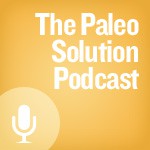The *E-volved Trainee part 3- Nutrition
Nutrition is a tough subject almost worse than discussing “spirituality”! It is VERY difficult to get people to change their eating habits; conventional wisdom is bogus and wise-wisdom is confusing! The fact is, food matters. Once broken down in the stomach, digested food passes into the blood stream just like a drug. Folks generally don’t take their food that seriously, thinking that anything packaged, legal, and sold in the grocery store is safe and nutritious to eat. When we read the labels it is confounding to note that many of the additives in food are only identifiable by a chemistry major. Everything about nutrition has already been said, so I am going to focus on some general concepts.
If you eliminated one thing…
I give my clients some internet homework before I discuss diet with them. And you too, should not listen to just me or anybody, read up on this material and be informed! If people can’t take the time to look up my references, they certainly will not have the discipline to stick to healthy eating. Initially, my first recommendation with clients is to eliminate one thing for 30 days. That thing is gluten. Ridding gluten from your diet is THE thing that makes people feel better in general. It can eliminate basic problems like skin breakouts, heartburn and bloating. It can also alleviate more complex problems like allergies and improve the well being in people with autoimmune disease. Gluten is a gut bomb, more for some than others, but even if you don’t feel the effects of gluten, it could be silently unlocking pathways for pathogens from your intestine into your bloodstream. The randomness of what enters your body is what causes the sensitivities to vary, from brain issues such as depression, to generalized inflammation in the body causing generalized pain, irregularity, skin breakouts and more. The scary thing about the effects of gluten is that is so nonspecific! Once you eliminate gluten and grains from your diet and see the benefits, you will want to know more about what else to eliminate and what to add to your diet, but it is a process!
What to eat…
Protein
Most people fail to get in enough protein. Why protein?
- It contains amino acids that are essential in several body functions including brain function, and cell signaling throughout the body.
- It helps build and maintain muscle mass. And as I said in my article on movement, muscle mass is the #1 biomarker for longevity! There are several different thoughts on the amount of protein one should ingest. I have found that 0.8 to 1 gram of protein per pound of body weight is what you should strive for. It is dependent on your activity level. I found a protein intake calculator that I like here, but it is brought to you by Nestle! (Maker of lots of junk food, boooo). Still, I like it because it takes into account your activity level and fitness goals, plus it gives you a nice chart of different foods and their protein content. Speaking of protein content, as Robb Wolf often states, the best sources of protein have ” a face and a soul”. And it should be natural and pasture fed if possible. Sorry, nuts and tofu don’t count.
- It stabilizes blood sugar. Fat and protein help stabilize blood sugar and carbohydrates spike it! To sustain you blood sugar I recommend, in addition to your daily requirement, 1 ounce of protein within 1 hour of waking, and 1 ounce before bed. It is literally like a time release blood sugar stabilizer! Low blood sugar signals stress hormones such as cortisol to rise, and high blood sugar often results in gaining fat. Here is a good little analogy that will help you understand how to balance your macro-nutrients. It is called the campfire analogy.
- Good meat that is pasture fed has a good amount of omega 3 fats.
Carbohydrates
Fresh Vegetables and a Little fruit, yes these are CARBS. Once you have figured out your protein requirement, put it on your plate and fill the rest of your plate with veggies! This way you will get the fiber you need and many nutrients as well. My favorites are kale, Brussels sprouts, sweet potatoes, and squash. As far as fruit goes, if you are trying to lose weight, limit your fruit to two or less servings a day, and if you are an athlete, 2-4 servings are fine. For a great guide on how to fill your plate check out the guide that the folks from Whole9 have developed. This guide will help you get it right!
Fats
Fats don’t make you fat. The high carb low fat era scared everyone away from fats. The fact is we need good fats to produce hormones, keep us satiated, and produce a huge source of energy. You can bet that if a food package says, “low fat”, the fat will be replaced with sugar and other unhealthy fillers. Coconut oil is my favorite. But I also use pasture-fed butter, ghee, bacon lard, red palm oil, olive oil, and macadamia nut oil.
Canola oil. I avoid vegetable oils and nut oils and especially canola oil. I usually ask my clients, “What is a canola anyway?” Canola is made in Canada from rapeseed, thus the name Canadian Oil Low Acid – “canola”. They didn’t think the name rapeseed would be marketable! I avoid vegetable oils, seed oils and most nut oils because of their potential for getting rancid and the major processing they go through (often processed with sodium hydroxide). A good quality oil does not easily become rancid. In addition to that, I always avoid oils in plastic packaging. The best oils to use at high heat are the saturated fats such as coconut oil, red palm oil and bacon lard. They are the most stable.
Olive oil. Don’t use olive oil in extreme heat, it is common to think that olive oil is always the “go to” oil, but not for high heat cooking. Here is a great guide on cooking temperature and smoke points for different oils.
Coconut oil. There are many great benefits derived from coconut oil. The medium chain triglycerides are quickly usable for activity and can help you burn more fat throughout the day. Coconut oil is becoming famous for helping people from everything from Parkinson’s Disease to protecting from tooth decay! Get some!
Nuts. A handful or so is good, but most nuts are pro-inflammatory because of their high omega 6 content. One of the ways to keep your omega 3 to omega 6 ratio balanced is to reduce your omega 6 intake. That doesn’t mean eliminating nuts, just limiting the amount you consume.
I have given you some bare bones information on nutrition, but I recommend informing yourself further. Check out the links I have provided and do some research. Remember exercise is important, but diet is crucial. You can’t exercise away a bad diet! Eat real whole foods and follow up on my suggestions. Letting yourself be comfortable with the conventional wisdom on diet is potentially threatening to your health. Take matters into your own hands.
Eva T. ( the E-volved trainer )
NEN Workout:
*Walk 100 meters on your hands, even if it is 2 meters at a time.
*If you cannot walk on your hands, bear crawl 4x100M










